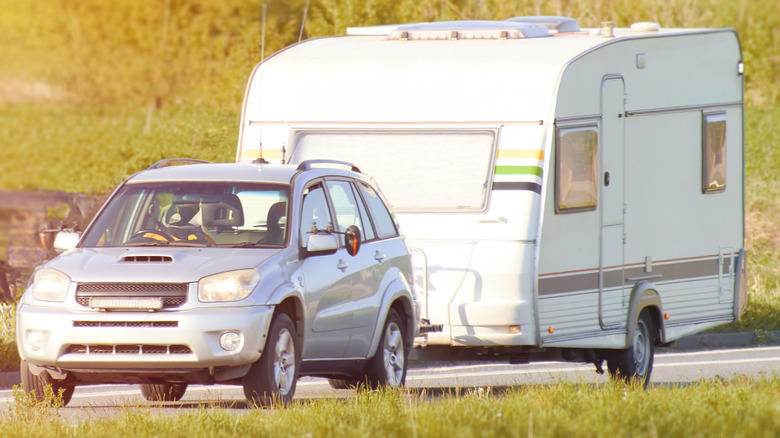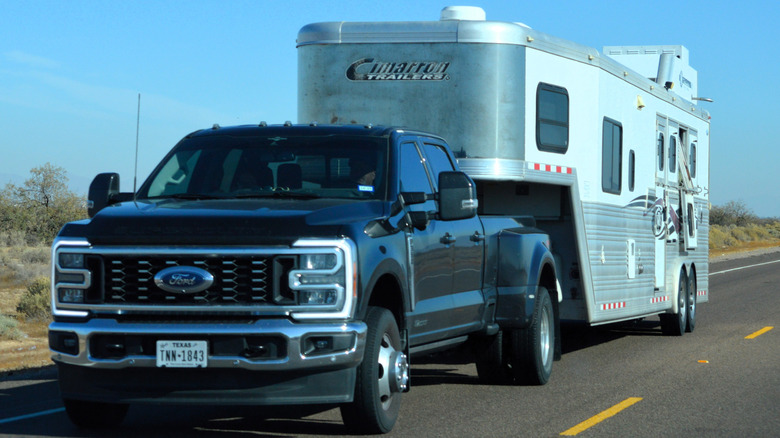Braked Vs. Unbraked Towing: What's The Difference And Which Is Safer?
If you're preparing to tow a trailer for the first time, you've probably come across the terms "braked" and "unbraked." The primary difference is in how the trailer slows down. A braked tow means the trailer has its own braking system that automatically engages when you hit your vehicle's brakes. As a result, both your vehicle and trailer will slow down at the same speed, which helps with quick stops. Most braked trailers are heavier, so they need the extra braking support. In many places, like the U.K., trailers weighing over 750 kilograms (1,650 pounds) are required to have braking systems.
In unbraked towing, the trailer doesn't have its own brakes, meaning your vehicle has to do all the stopping on its own. Compact trailers, such as box trailers, jet ski trailers, and lightweight travel trailers, are often unbraked. For unbraked trailers in some regions, weight limits are capped at the lower value of either 1,650 pounds or half the kerb weight of the tow car.
Which towing option is safer — braked or unbraked?
Ultimately, the weight of the load you are towing determines the safer towing option. Braked towing is the better option if you are towing a heavier cargo, as the tow vehicle and trailer will share the braking load. This not only reduces stopping distances but also helps prevent instability such as truck jackknifing or swaying. Also, braked trailers usually come with a breakaway system — an additional safety line that pulls the brakes if the trailer comes loose, stopping it from rolling away. Unbraked towing, on the other hand, is more suitable for lighter loads. Since the tow car does all the braking work, things can get complicated if the trailer is too heavy. It can make steep descents and emergency stops more difficult and unsafe.
Regardless of what you're towing, it's important to stay within your vehicle's towing capacity for both braked and unbraked trailers. For unbraked towing, make sure your vehicle's brakes, tires, and suspension are in good shape so it can handle the extra weight safely. Above all, drive carefully. Leave extra space for stopping and avoid sudden maneuvers. A little extra caution goes a long way in keeping you — and everyone else — safe.

